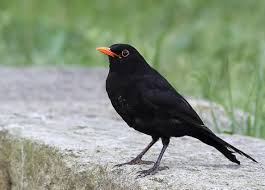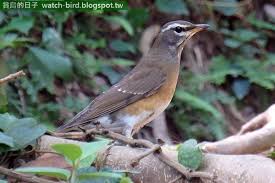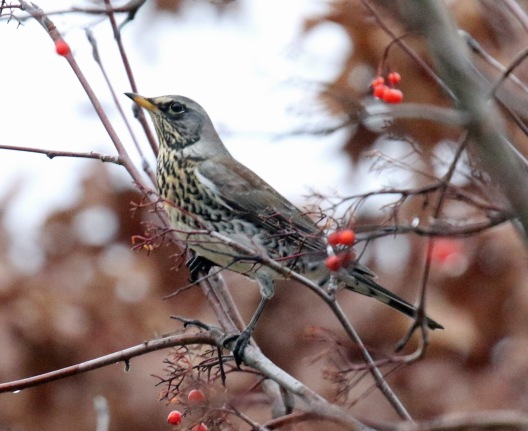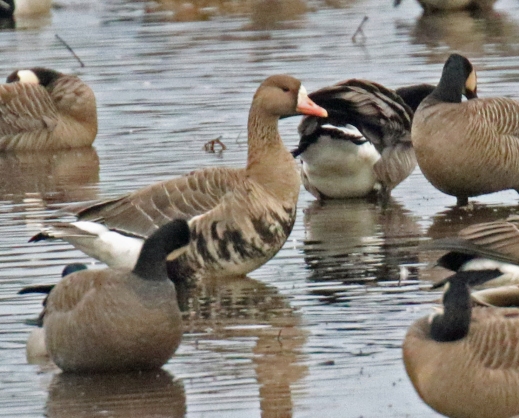As with my previous post about South Carolina, I am going to start with Connections – a critical, challenging, essential and incredibly rewarding part of my 50/50/50 Adventure. My goal is to bird in each of the 50 states with a meaningful local connection – hopefully a local birder or maybe someone with just local perspectives and insights – ideally both. In a pre-trip exchange with Ken Scott – my new found birding friend in South Carolina, I asked if he might know someone to work with in Georgia. He connected me to Buddy Campbell who was compiling some of the South Carolina Christmas counts and was “well connected”.
Through Buddy I connected with Diana Churchill – no not Diana Spencer Churchill, the eldest daughter of Sir Winston Churchill. That Diana died in 1963. This Diana Churchill has been writing a twice-monthly column, “Birder’s Eye View,” for the Savannah Morning News since 2001 and in 2011 published a book, Birder’s Eye View: Savannah & the Low Country. Despite being busy with the publication of the sequel Birder’s Eye View II: The Low Country and dealing with family health matters, she was very helpful both in suggesting places to visit and also connecting me first with Pam Smith, an avid but relatively new birder in the area and then with Steve Calver, who Pam described as “the best”. I would very much have loved to have met Diana but those two connections were fantastic and I ended up birding two days with them. They were both “the best”. Steve was an incredible birder and knew every nook and cranny in the area. Pam was a lot better than she gives herself credit for and was as nice and friendly as anyone I have met. And Pam hooked us up with Russ Wigh – another great birder and great guy and we all joined him for a second day of birding at The Landings. More on all of this follows. It was a great visit.
With Pam Smith and Steve Calver

Pam was dealing with some lower back issues and the original plan was for me to bird a bit on my own the first morning with her meeting me after a doctor’s appointment. When Steve joined the program, that changed to starting early with him and having Pam join later. Steve had a special place in mind to start the day. At first the location was confusing to me but when I actually mapped it out, it was literally three minutes from my hotel – something he had not been aware of. When I got there to meet him, I wondered why he had chosen this spot – some woods next to a parking lot behind the Comfort Inn. But the forest edge was quite birdy – especially with Yellow Rumped Warblers – a theme that would continue all day. But then we headed off on a nondescript path that I doubt I would have noticed myself and we birded through some woods until we came to a wetland and pond. It was a wonderful place and definitely something I would never have discovered on my own.
We spent two hours there and had 33 species with a few Wood Ducks, a single Great Egret and a single Great Blue Heron as the only “water birds”. There was also a constant flow of Ring Billed Gulls. American Robins, noticeably few in South Carolina, were constantly flying overhead and we estimated over 1000 Red-winged Blackbirds. Yellow Rumped Warblers were everywhere – a nuisance distraction as we were constantly seeing them flit about forcing us to be sure they were not something else. Steve estimated at least 60 and I think there could even have been twice that many. There were also more Ruby Crowned Kinglets than I think I have ever seen elsewhere – at least 15.
Ruby Crowned Kinglet

But Steve had not brought me here for any of those birds. This was also a great place for woodpeckers – and particularly for Red Headed Woodpeckers which I had mentioned to him in an email as a favorite. We got to an area with many snags and sure enough two Red Headed Woodpeckers came in. The lighting was terrible and they were distant so no great photos but still a great find.
Red Headed Woodpecker

Other woodpeckers included Northern Flicker (Yellow Shafted), Downy, Red Bellied and Pileated Woodpeckers and Yellow Bellied Sapsucker. I got a nice photo of the latter when there was some sun.
Yellow Bellied Sapsucker

I had also mentioned Winter Wren as a desired species since I do not have a photo of one. Steve took me to a very specific spot where he had found them before. We searched diligently and tried playback to no avail. Just as he was when there was not a better photo op for the Red Headed Headed Woodpecker, I think Steve was more disappointed than I was that we did not get the Wren. That’s how he was the whole visit – caring and considerate and giving. On the way out we stopped again at the forest edge near where we parked. I got a quick glance only at a small bird with a bright yellow belly. It was a spectacular White Eyed Vireo. I wish it had posed for a photo.
Our next stop was the Chatham County Wetlands Preserve, an Ebird Hotspot that I had originally planned to bird on my own before meeting up with Pam Smith. It was another good spot with even more Yellow Rumped Warblers. Pam did come to meet us there arriving just after I found and finally got a life photo of a Sedge Wren – making it pretty clear that the bird I had seen at Caw Caw was a Marsh Wren. Not world class photos but they made my day.
Sedge Wren – ABA Photo #695


We had 24 species at this spot in a bit less than an hour and a half and I was at 43 species for the day. Now a birding threesome, we headed off to another local Ebird Hotspot – Hutchinson Island where Steve hoped there might be a very rare Western Kingbird, Sure enough we found two. This was a lifer for Pam and it was super to see her excitement as she added this species to her Life List. Being there with her was one of the best parts of my visit.
Western Kingbird (one of two) – Distant Photo

We again spent about an hour and a half finding 25 species but ten were new ones for the day and we were now over 50. One very nice bird was a very bright Prairie Warbler. Only a quick but good look – no photos. Other new species were Field and Savannah Sparrows, Osprey and Red Tailed Hawk, Gray Catbird, Killdeer, Double Crested Cormorant and a Loggerhead Shrike – the only one of my entire trip. Before a quick lunch at Subway and a visit to Steve’s home with its very productive feeders, we made a quick stop at a field where I found a Wilson’s Snipe and where we also had a lovely Red Shouldered Hawk.
Wilson’s Snipe

Red Shouldered Hawk

Steve was very kind inviting us to his home – clearly a birder’s home with photos of favorite birds and a very bird friendly backyard with a number of feeders. In less than an hour we had 17 species and a number of great photo ops. Most interesting to me were the 4 or 5 Baltimore Orioles. Steve said he has had as many as 8!! There was a very active Ruby Throated Hummingbird but not the quite rare Black Chinned Hummingbird that he has had on occasion. As we prepared to leave we had two more very nice visitors – a Painted Bunting and a bright Yellow Throated Warbler made appearances.
Baltimore Oriole Female

Ruby Throated Hummingbird

Painted Bunting

Yellow Throated Warbler

We made one more stop together – Lake Mayer where we added 4 duck species, Brown Pelican, Anhinga, American Coot and Forster’s Tern for the day bringing us to 70 species. Anhingas are sometimes called “Snake Birds” coming from their behavior of swimming with body submerged and their long, thin snaky neck the only thing seen above the water. We watched one catch a good sized fish and others drying their wings – quite beautiful.
Anhinga

Larry Calver bid us adieu and said he would try to join us the following day. Pam continued as tour guide and took me to Priest Landing on Skidaway Island. We were beginning to run out of light but she wanted me to have some targets there for our day. In about 25 minutes we had 20 species including 7 new for the day – mostly waders including a Wood Stork and a Tricolored Heron. For me the two best birds were our last ones we found. Pam has a great birding ear and she picked up some Brown Headed Nuthatches feeding high in trees right next to the road. Then the coup de grace was just after me mentioning that I was surprised that we had not had any Blue Gray Gnatcatchers, she heard two and in very little light we actually found and photographed one – species 77 for our great day together.
Blue Gray Gnatcatcher

It had been a very enjoyable time with great birds and two really wonderful people. The photo of a Sedge Wren was of course the highlight, but it was just one of those days that flowed easily and well. The good news was that we were going to reassemble the next day and bird a private community – “The Landings” with Russ Wigh, a resident. But first I celebrated the day with a rare for me steak dinner. Birding can be a lot of fun!!!
We reconvened the next morning at a “retail center” on Skidaway Island next to The Landings. I use quotation marks because there is no way that anyone would have believed it was a retail center – designed to fit into the planned development without a hint (and barely a sign proclaiming) of what it was. Russ Wigh is another well traveled birder who has relocated to South Carolina. The Landings is a golf-centered community with numerous ponds, some native growth and well groomed homes and landscaping. It is a gated community open only to members with a number of courses and an architectural consistency that works even though there is a wide range of home prices and sizes. It was attractive but not ostentatious – a very pleasant place – and full of birds.
Before entering The Landings, we got 23 species in 23 minutes at the University of Georgia Aquarium including a Black Bellied Plover, a Willet and some Dunlin. We then returned to Priest Landing and found NO waders at all. The preliminaries over, we now entered The Landings itself. I will not catalog observations chronologically – just some standouts – like hundreds of Hooded Mergansers. Every little pond, and there were many of them, had scads of these gorgeous ducks and they are all tame as apparently they are fed regularly by the residents. If you walked up to the water’s edge, the Hoodies would swim over looking for a handout. This unnatural behavior does provide photo opportunities,
Hooded Merganser – Up Close and Personal

Russ was familiar with every tree and lawn and pond in the area having kept a running count for many years – definitely over 170 species but I cannot recall his list total. Knowing that I was looking for a species count, we went to a pond that had a female Lesser Scaup – the only one around. It swam nonchalantly with more Hooded Mergansers.
Lesser Scaup

To add another species we also visited “the best” pond for roosting Black Crowned Night Herons – and found many – adults and juveniles. Yellow Crowns are found sometimes but not this day.
Black Crowned Night Heron

At the next pond we had one of several Ospreys meaning of course that there are fish in the ponds. I never followed up to get the full story, but Russ had told us that we had to be careful with our sightings because there are decoys in most of the ponds and they are there somehow related to helping the fish populations. We came close to falling for “new” species a couple of times but plastic ducks don’t count. By the way as you can see from the photos it was a fine and clear day with temperatures starting in the low 50’s and ending up just over 60 degrees.
Osprey

There were many habitats in The Landings including a salt water marina and beach where we had Horned Grebe, Least Sandpiper, Ruddy Turnstone, Herring and Ring Billed Gulls, and Forster’s Terns. It was becoming easy to see how the area had such a big species list.
Ruddy Turnstone

We also spent rewarding time at Russ’s yard and feeders. As at Steve Calver’s this was a great opportunity not just for good birds but also good photos. I include just a few.
Downy Woodpecker

Brown Headed Nuthatch

Carolina Wren
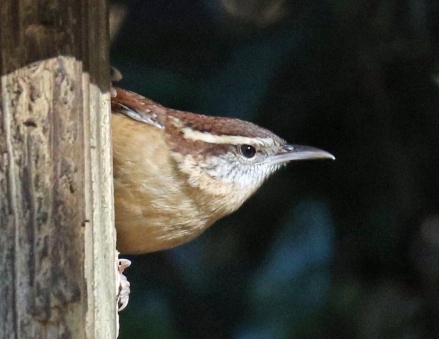
Pine Warbler

About those Carolina Wrens…they were everywhere and it is amazing how such a small bird has such a loud song. They were often the first bird heard each morning and they continued to be heard throughout the day – welcomed every time. Another bird that was heard frequently was the Northern Cardinal. I was often struck though by how hard it could be to actually see such a bright red bird as they often remained buried in the branches and foliage.
We ended the day around 1:00 p.m. giving me time to visit “Historic Savannah”. Hugs goodbye to great companions. We had seen 55 species that morning bringing the two total up to 95 species – a fabulous visit. I am sure I did not do it the right or best way but I was disappointed with the Historic Area in the city. Some interesting architecture and lots of park blocks interspersed within commercial and residential areas, but it seemed helter skelter without there being a consistent interesting core. I had not done my homework and I am sure I missed some treasures. Around 3:00 p.m. I abandoned the city and headed out to Tybee Island to see if I could get to 100 species for Georgia.
In my initial planning for the visit, it seemed that Tybee Island would be a great spot to go for 50 species in a day. On this visit I concentrated on the beach and jetty only. Given all the no parking or paid parking areas, I can only imagine the crowds in the summer, but on this day I essentially had it all to myself. Although the first bird I saw was a Chipping Sparrow near where I parked, most of the birds were shorebirds or water related. A small flock of gulls included some Laughing Gulls and Sanderlings ran along the beach next to them. Both were new for the trip.
Laughing Gull
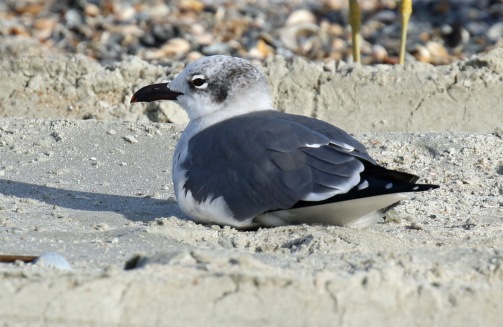
Sanderling

The only birds out in the ocean were a Common Loon and some Brown Pelicans and the only shorebirds continued to be Sanderlings. I would need some help to get to 100. Help came in the form of a nice group of shorebirds at the south end of the Island by the jetty. There a small mixed flock had more Sanderlings, a Ruddy Turnstone, two American Oystercatchers and three Piping Plovers, the latter two new for the day bringing the count to 99.
Ruddy Turnstone

American Oystercatcher

Piping Plover

Where would 100 come from? I would walk back along the beach and maybe something new would come in. Nope did not have to wait, a flock of 8 Black Skimmers flew by and then landed right next to me. Beauties…
Black Skimmer

It was getting late and I had a very early flight the next morning. Time to leave. I was pleased with every part of the day at least related to birds and people. Somehow it seemed fitting that I had made it to 100 species. Then there was a surprise. When I got back to the car, I heard a familiar call and found a single House Sparrow. I had expected to see them in many places including in Savannah, but I had not. It was species number 101 and I had to chuckle when I realized that it meant one more species than the 100 I had in Alabama earlier this year. Alabama had just beaten Georgia in a hotly contested and close SEC Football Championship Game. This time Georgia came out on top…with me being the only one that noticed.
I arose early the next morning to get the car back to the airport and make my 6:01 a.m.flight to Dallas and then off to Seattle. The Savannah Airport is small and very lovely – a little gem – and very easy to navigate. I probably could have gotten there 15 minutes before departure and been ok. It was a long flight home after a very fun week in the Lowcountry of South Carolina and Georgia. As good as the birds were and as lovely the area, without any question it was the people that made this visit special. Ken and Betty and John and Karen in South Carolina. Pam and Steve and Russ in Georgia. And Buddy and Diana behind the scenes making it all possible. I truly regret not being able to meet those two but will be forever grateful for their support and aid and will long remember my time in the field with the others.
Having found my 50 species in a day in each state, my “completed list” now stands at 23. I am off to New Mexico in January and Hawaii in February and then it gets really busy, Been a blast.


















































